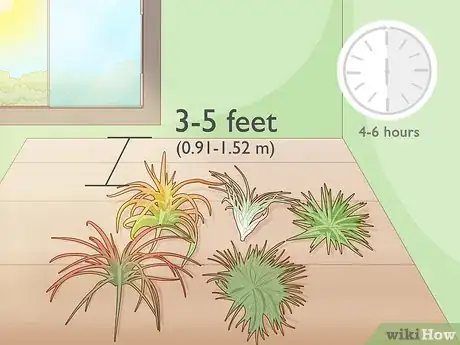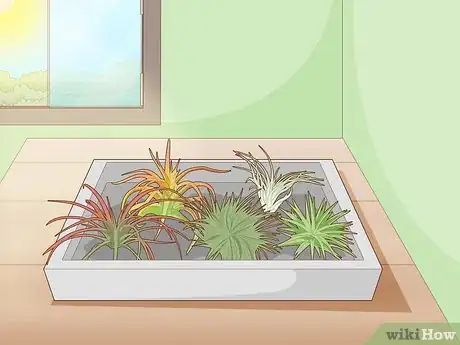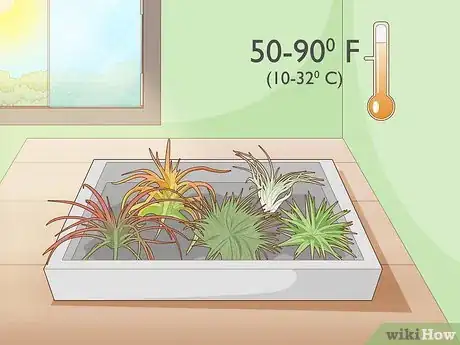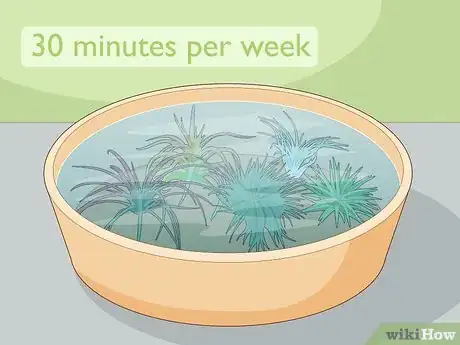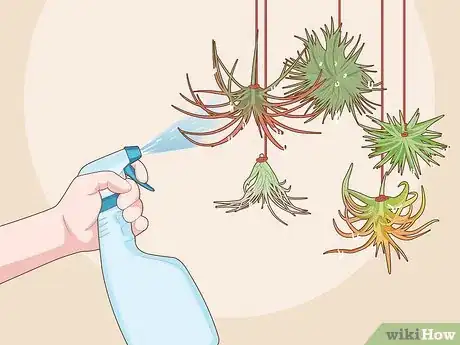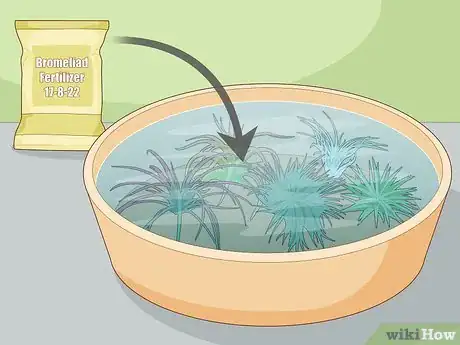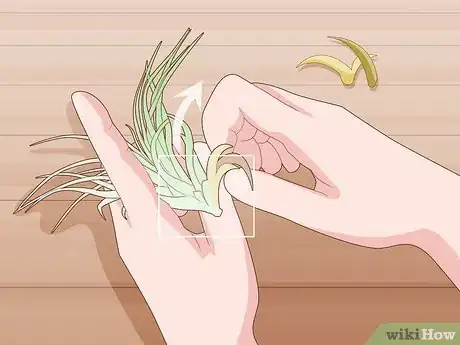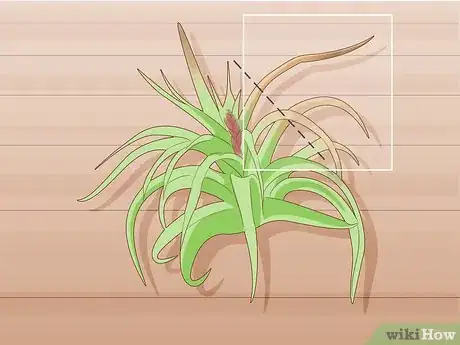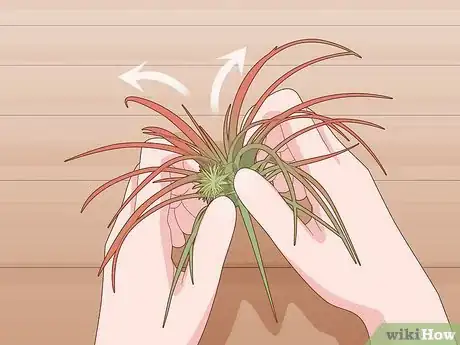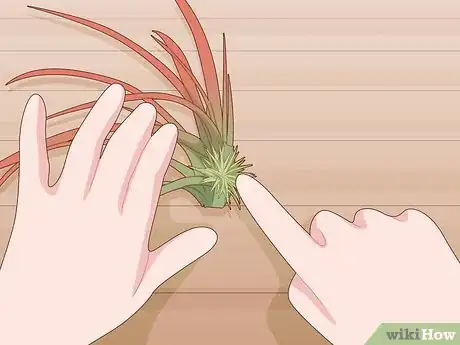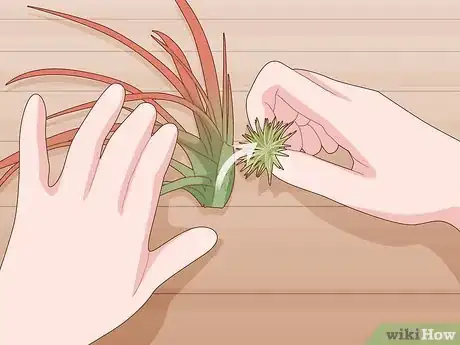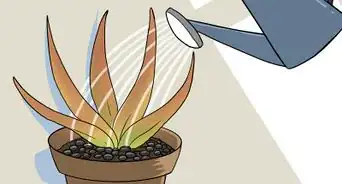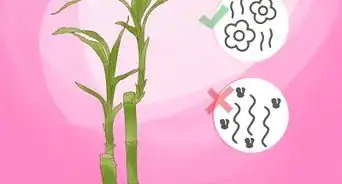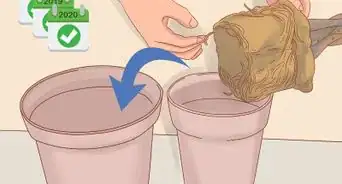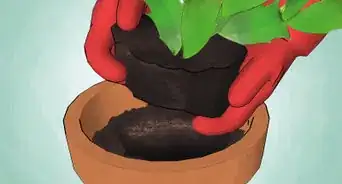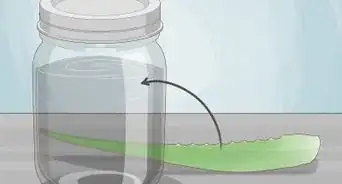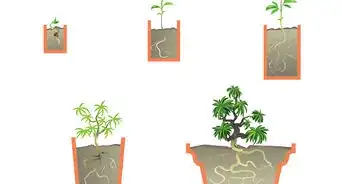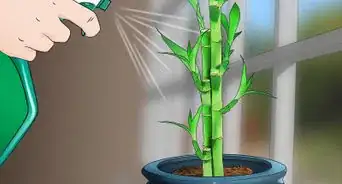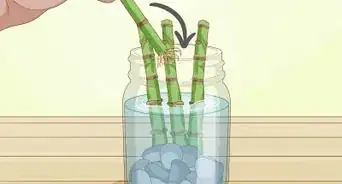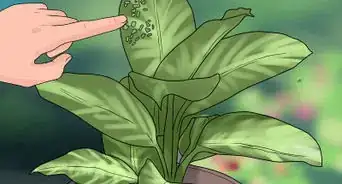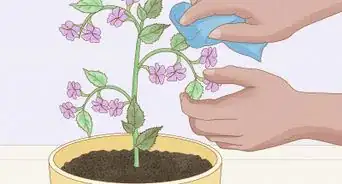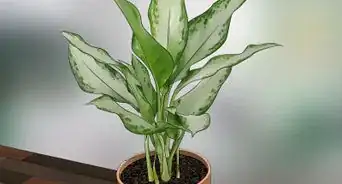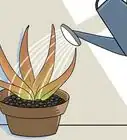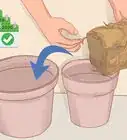This article was co-authored by Harmony Corelitz and by wikiHow staff writer, Amber Crain. Harmony Corelitz is a Plant Specialist and the Ecommerce Manager at Crimson Horticultural Rarities, Inc, a boutiue offering rare plants, flower arragements, and handmade goods. Harmony grew up helping her parents run their family business in plant maintenance and interior plantscaping. Harmony specializes in indoor plant care and interior plant design. Prior to her workwith Crimson Horticultural Rarities, she started her pop-up plant and vintage home goods shop called Younger Child and helped her former employer, Plants and Friends, grow and expand to two locations. She holds a BA from the University of San Francisco.
There are 16 references cited in this article, which can be found at the bottom of the page.
wikiHow marks an article as reader-approved once it receives enough positive feedback. In this case, 97% of readers who voted found the article helpful, earning it our reader-approved status.
This article has been viewed 37,003 times.
Air plants, also known as Tillandsia, do not grow in soil. Instead, they survive by pulling nutrients from the air. They make great house plants because they require very little maintenance aside from 4-6 hours of indirect sunlight every day and weekly waterings. Since air plants don’t grow in soil, you can create all sorts of interesting displays with them! All you have to do is find them a stable, moisture-free surface to grow on.
Steps
Creating the Ideal Environment
-
1Provide 4-6 hours of bright, indirect sunlight every day. Air plants love bright light but they cannot withstand direct sunlight, which quickly burns their foliage.[1] Place your air plant within 3–5 feet (0.91–1.52 m) of a south, east, or west-facing window to ensure it gets plenty of bright, filtered sunlight.[2]
- In the Northern Hemisphere, a south-facing window will receive the most light during the day. If you live in the Southern Hemisphere, it's the opposite—a north-facing window gets more light.[3]
-
2Place or mount your air plant on a dry, stable surface. Air plants do not grow in soil, which allows you to display them in all sorts of interesting and attractive ways. They do require a dry, stable surface that doesn't hold water, but other than that, your imagination is the limit.[4]
- For example, you can place air plants on a sunny windowsill or on a bookshelf near a light source. Positioning them inside glass terrariums or globes is a popular and attractive solution.
- You can also mount an air plant to a surface permanently with hot glue or super glue. If you don’t want to use glue, tie the plants in place with fishing wire.
- Try mounting your air plant on a piece of driftwood or coral using hot glue to create a pretty display. Decide where you want to position the air plant on the chosen material, apply a small amount of hot glue to the area, and press the underside of the air plant clump into the glue. Hold the plant in place for 10-15 seconds so the glue can set.[5]
Advertisement -
3Maintain a temperature between 50–90 °F (10–32 °C) for healthy growth. Most indoor temperatures easily fall within this range, but sunny windows can get quite hot in the summertime. Similarly, temperatures near windows can drop quickly in winter. If you live in a particularly hot or cold climate, you might want to mount a thermostat near the window so you can monitor the temperature.[6]
- You could also download a free app to your smartphone to monitor temperature or use a digital temperature gun to take periodic readings.
- Air plants are tropical and they will die if they’re exposed to temperatures lower than 45 °F (7 °C).[7]
-
4Soak air plants in a basin or tub of water for 30 minutes once a week. Give your air plants a thorough watering every week by placing them directly in a tub or sink filled with water. Submerge the plants and leave them for half an hour. Then, shake them gently to get rid of excess moisture and spread them upside-down on a clean towel so they can air-dry.[8] [9]
- If your mounted air plant can’t be moved, mist it heavily with water until the leaves are dripping.[10]
- Letting an air plant dry upside-down allows the water to drip away from the crown of the plant. Otherwise, water might settle into the crown and cause rot.[11]
- Return the plants to their designated window after they dry completely.
Tip: It's best to water air plants with bottled water or filtered tap water. Avoid using distilled water, since the distillation process removes all of the nutrients.[12]
-
5Mist air plants between waterings to add moisture and humidity. Air plants are tropical, so they enjoy plenty of heat and humidity. Put fresh water into a spray bottle and mist your air plants a little bit each day. Pay attention to your air plant’s leaves, which will curl or roll up if the plant gets dehydrated.[13]
- Dehydrated leaves may also look pale green in color and feel soft to the touch.[14]
- If you see curled or rolled leaves, give the plant a thorough soak and remember to keep up with daily misting.
- If you live in a humid climate, you can probably mist your plants every other day.
-
6Feed air plants with Bromeliad fertilizer once a month to encourage growth. Bromelaid fertilizer is a 17-8-22 fertilizer that you can buy from nurseries or online. If you don’t have access to Bromelaid fertilizer, you can use any water-soluble houseplant fertilizer diluted to ¼ strength. Pour the fertilizer into the basin of water before a weekly watering session and submerge the plants in the water for half an hour like you normally would.[15]
- Use the amount of fertilizer recommended on the packaging, but make sure you dilute it to 1/4 strength if it's a general houseplant fertilizer.
Pruning and Dividing Air Plants
-
1Pull off dry, brown leaves at the base of the plant when they appear. It's completely normal for leaves at the base of an air plant to dry out and turn brown over time, especially if the plant is acclimating to a new environment. Gently grasp the brown leaves with your fingers and pry them away from the base whenever you see them.[16]
-
2Trim away dry, brown leaf tips with a sharp pair of scissors. The tips of air plant leaves get brown and dry occasionally. Use pruning shears or scissors to cut the dried tips off at an angle so the leaves continue to have pointed ends. That way, the pruned foliage will blend naturally into the rest of the plant.[17]
- Dry tips could mean that you're underwatering the air plant. Consider misting your plant more often to see if the issue resolves.
-
3Divide air plants once they begin to reproduce to control growth. Young air plants grow rather slowly. However, after 2-4 years of proper care, growth tends to accelerate rapidly. Baby shoots, also known as pups, will start appearing at the base of the plant. To control size, you can remove the pups from the mother plant and create new plants.[18]
- Make sure pups are at least a third of the mother's size before removing them.
-
4Spread the leaves gently with your fingers to isolate the pups. Hold a single clump in both hands and gently work your fingers into the base of the clump, which is where the pups grow. You will be able to clearly see where the individual pups attach to the mother plant.[19]
- It’s easiest to divide plants immediately after soaking them in water.
-
5Pull the pups away from the mother carefully with your fingers. Apply a little bit of pressure and separate the pups from the mother. The pups will separate easily and eventually become mother plants themselves. Once the clump is divided, let the pups air-dry completely before returning them to their designated spot![20]
- Since they multiply quite a bit, you might want to give away some of your pups to friends and family.
Expert Q&A
-
QuestionHow do I choose a good spot in my home to grow my air plant in?
 Harmony CorelitzHarmony Corelitz is a Plant Specialist and the Ecommerce Manager at Crimson Horticultural Rarities, Inc, a boutiue offering rare plants, flower arragements, and handmade goods. Harmony grew up helping her parents run their family business in plant maintenance and interior plantscaping. Harmony specializes in indoor plant care and interior plant design. Prior to her workwith Crimson Horticultural Rarities, she started her pop-up plant and vintage home goods shop called Younger Child and helped her former employer, Plants and Friends, grow and expand to two locations. She holds a BA from the University of San Francisco.
Harmony CorelitzHarmony Corelitz is a Plant Specialist and the Ecommerce Manager at Crimson Horticultural Rarities, Inc, a boutiue offering rare plants, flower arragements, and handmade goods. Harmony grew up helping her parents run their family business in plant maintenance and interior plantscaping. Harmony specializes in indoor plant care and interior plant design. Prior to her workwith Crimson Horticultural Rarities, she started her pop-up plant and vintage home goods shop called Younger Child and helped her former employer, Plants and Friends, grow and expand to two locations. She holds a BA from the University of San Francisco.
Plant Specialist The misconception with air plants is usually that they don't need a lot of natural light, but that's not the case. They actually need a lot of bright filtered sun. If you have a northern or eastern window, I suggest keeping your air plant within three feet of the window. For southern or western exposure, you can keep it a little bit further away—it might get a little bit of sunburn if you keep it directly in the window. Three to seven feet from a bright window is ideal.
The misconception with air plants is usually that they don't need a lot of natural light, but that's not the case. They actually need a lot of bright filtered sun. If you have a northern or eastern window, I suggest keeping your air plant within three feet of the window. For southern or western exposure, you can keep it a little bit further away—it might get a little bit of sunburn if you keep it directly in the window. Three to seven feet from a bright window is ideal. -
QuestionWhere can you buy them? Is there a site you can refer me to?
 CrazyPLantLadyCommunity AnswerUsually you can find them at your local nursery, but if that is not an option, Amazon does sell them in little bundles that aren't very expensive.
CrazyPLantLadyCommunity AnswerUsually you can find them at your local nursery, but if that is not an option, Amazon does sell them in little bundles that aren't very expensive.
Things You’ll Need
- Stable surface
- Spray bottle
- Dry towels
- Hot glue or super glue (optional)
- Mounted thermostat (optional)
- Water-soluble fertilizer
References
- ↑ Harmony Corelitz. Plant Specialist. Expert Interview. 7 April 2021.
- ↑ https://gardeningsolutions.ifas.ufl.edu/plants/houseplants/air-plants.html
- ↑ https://greenpassivesolar.com/passive-solar/building-characteristics/orientation-south-facing-windows/
- ↑ https://gardeningsolutions.ifas.ufl.edu/plants/houseplants/air-plants.html
- ↑ https://www.youtube.com/watch?v=wT3XsGXVuyc&feature=youtu.be&t=48
- ↑ https://www.youtube.com/watch?v=-wk9T4Dpo4Y&feature=youtu.be&t=256
- ↑ https://www.bhg.com/gardening/houseplants/care/grow-air-plants/
- ↑ https://www.bhg.com/gardening/houseplants/care/grow-air-plants/
- ↑ Harmony Corelitz. Plant Specialist. Expert Interview. 7 April 2021.
- ↑ https://gardeningsolutions.ifas.ufl.edu/plants/houseplants/air-plants.html
- ↑ https://www.youtube.com/watch?v=-wk9T4Dpo4Y&feature=youtu.be&t=195
- ↑ https://www.youtube.com/watch?v=xCqAJh0vv1k&feature=youtu.be&t=125
- ↑ https://gardeningsolutions.ifas.ufl.edu/plants/houseplants/air-plants.html
- ↑ https://www.youtube.com/watch?v=-wk9T4Dpo4Y&feature=youtu.be&t=241
- ↑ https://www.youtube.com/watch?v=-wk9T4Dpo4Y&feature=youtu.be&t=316
- ↑ https://www.youtube.com/watch?v=-wk9T4Dpo4Y&feature=youtu.be&t=278
- ↑ https://www.youtube.com/watch?v=-wk9T4Dpo4Y&feature=youtu.be&t=296
- ↑ https://www.youtube.com/watch?v=-wk9T4Dpo4Y&feature=youtu.be&t=386
- ↑ https://www.youtube.com/watch?v=-wk9T4Dpo4Y&feature=youtu.be&t=407
- ↑ https://www.youtube.com/watch?v=-wk9T4Dpo4Y&feature=youtu.be&t=407
